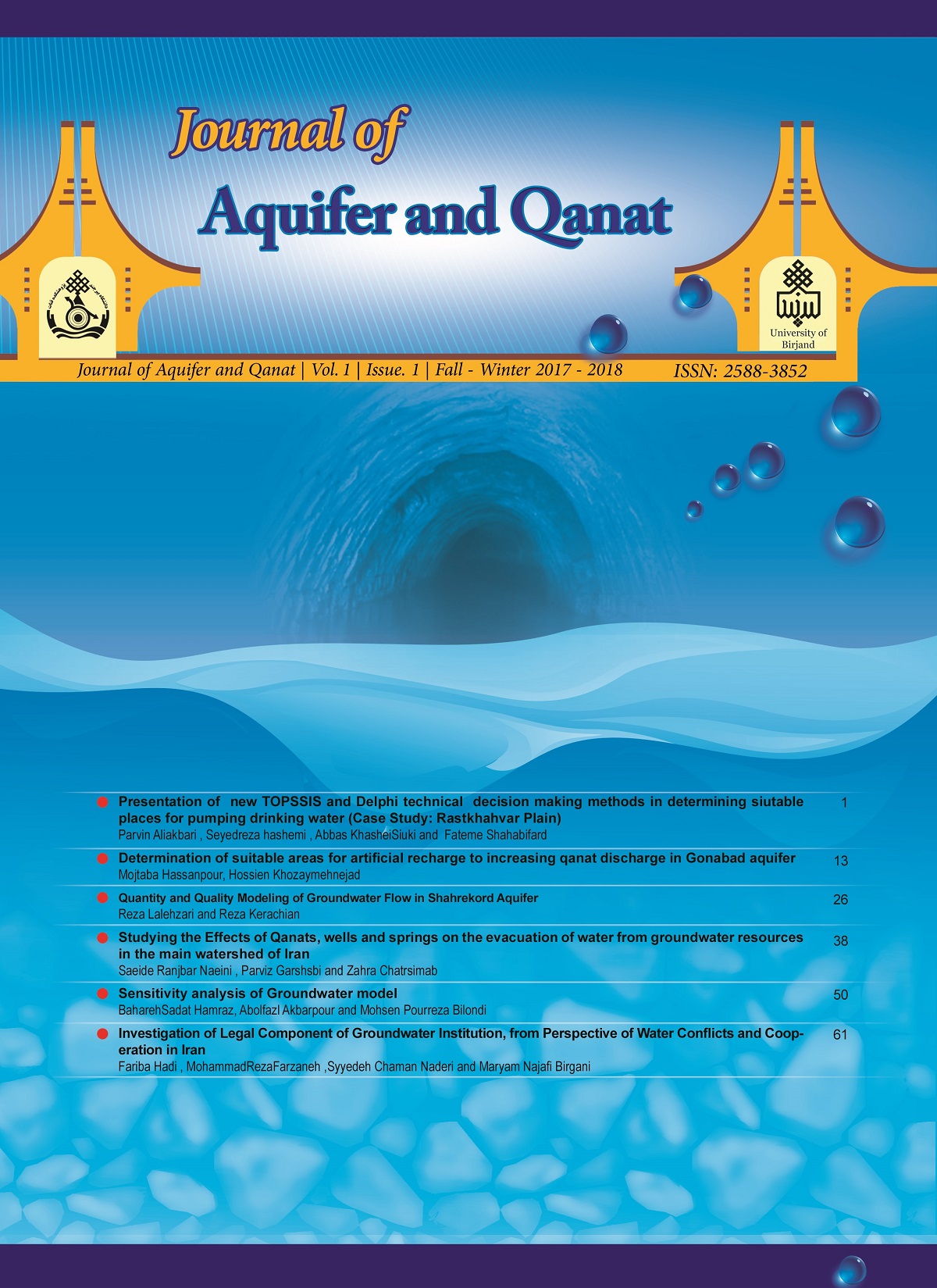Arabkhedri, M., Hakim Khani, N. 2003. Investigation between relation of desertification ancient technology: Starling Dam and Qanats, Geographical Research, 49-61. [in Persian].
Behnia, A. 2000. Qanats protection, University Publishing Centre, 236 pages. . [in Persian].
Boostani, a., Ansari, H. 2013. The problems of rural Qanats workshop supervising restoration, Journal of Agricultural and Natural Resources Engineering, 42: 41-45. [in Persian].
Ebi Zadeh, a. 2010. The Exploration of the Qanats with a focus on education and rehabilitation of local technology, culture and architecture of Iran, Armanshahr, 5: 1-22. [in Persian].
Ebrahimi zaker, D. 2015. Ab anbar, Qanat and Band sar. Yazda Publication 271 p. [in Persian].
Farhangi, B. 2004. Water Melody in the Passage of Time, A Review of Hydro Structures of IRAN From Ancient Era to Present Time. 252 p. [in Persian].
Gabriel, A. 1935. translated by Najd Samiei, F. Cross the deserts of Iran, Astan Quds Razavi, 440 p.
Ghorbani, b. 2007. A glance at historical qanats in Iran with an emphasis on Vazvan qanat in Isfahan, International History Seminar on Irrigation and Drainage.
Goblo, H., Translation: Sarvghad Moghaddam, A., Papli Yazdi, M.H. 2010. Qantas Engineering to achieve water, Papli Press, 247 p.
Kamali Moghaddam, R., Seyyedi, F., And Ebrahim, N. 2011. Investigation of watershed protection activity effects on drought (case studies Fooierd-Qom), the fifth Conference of watershed management and soil and water resources management. [in Persian].
Kardavani, p. 1998. Iran's subterranean origin (Qanat) and the source of its spread in the world, 35: 7-20. [in Persian].
Office mega planning of Water and ABFA. 2010. Statistical Yearbook of the country from 1387 to 1386. Shaheed Beheshti University Press, 344 p. [in Persian].
Ministry of Energy, Iran Water Resources Management. 2010. report the status of groundwater resources by the end of water year 1387-1388.
Papli Yazdi, M.H. 1993. Qanat and its economic value, the sample stream Gonabad Mashhad, Journal of Faculty of Letters and Humanities Sciences, Mashhad, 2: 309-322. [in Persian].
Saeidian, A. 2013. Qanat, traditional irrigation infrastructure system in Iran, Elixir International Journal, 55: 12743-12747.
Siyavashi, M. 2014. QanatYazda Publication 223 p. [in Persian].
Semsar Yazdi, A. A. 2011. Qanat; an Ancient Technique for Adapting to New Climate Changes. Journal of Arid Land Studies, 21(2): 71 -73 .
Tolman, C.F. 1937. Ground Water, Mc Graw Hill ,593p.
WenJun H.U., JieBin Z., YongQiang L. 2012. The qanats of Xinjiang: historical development, characteristics and modern implications for envi- ronmental protection, Journal of Arid Land, 4(2): 211−220.
Wulff, H.E. 1968. The Qanats of Iran, Scientific American, 94 – 105.

